📞+86 153 7530 2641 📧 hongjing.Wang@feichuncables.com

KSM-S (N)TSCGEWÖU Reeling Power & Data Cable for Container Cranes and Heavy-Duty Mobile Equipment
Looking for a high-performance reeling power and data cable for container cranes or mobile heavy equipment? Discover the KSM-S (N)TSCGEWÖU cable—engineered to withstand dynamic tensile stress, torsion, and harsh environments. Also available with fibre optic for flawless data transmission. Ideal for ports, mining, and large-scale mobile platforms.
hongjing.Wang@Feichun
7/31/202510 min read


What is KSM-S (N)TSCGEWÖU Cable?
The KSM-S (N)TSCGEWÖU cable represents a pinnacle of engineering excellence in the specialised field of reeling power and data transmission cables. This sophisticated cable system is specifically designed as a drumable connection cable for use on cable trolleys, engineered to handle the most demanding mechanical stresses encountered in industrial applications. The designation "KSM-S" refers to the cable's robust construction featuring silicone-free and LBS-free production standards, whilst the "(N)TSCGEWÖU" specification denotes its multi-conductor configuration with earth conductors and specialised insulation properties.
This cable system excels in applications requiring simultaneous power transmission and data communication under extreme mechanical conditions. The cable's primary function is to provide reliable electrical connectivity for mobile equipment that experiences continuous movement, dynamic loading, and multi-directional flexing. Its design incorporates advanced materials and construction techniques that ensure consistent performance even under the harshest operational conditions.
The target industries for KSM-S (N)TSCGEWÖU cables encompass a broad spectrum of heavy industrial applications. Port facilities rely on these cables for container cranes that operate around the clock, handling thousands of containers with precision and reliability. Mining operations utilise these cables in mobile heavy machinery such as draglines, bucket-wheel excavators, and conveyor systems that must operate in challenging environmental conditions. Construction and infrastructure projects employ these cables in mobile platforms, tower cranes, and specialised heavy equipment where traditional fixed wiring solutions prove inadequate.
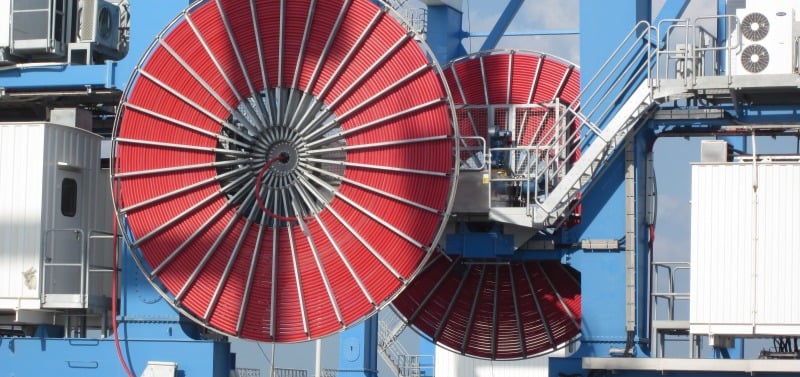

Application Scenarios and Advantages
The KSM-S (N)TSCGEWÖU cable system finds its most critical applications in trolley systems and reeling drums where conventional cables would fail under the mechanical stresses involved. These applications demand cables that can withstand not only electrical loads but also significant mechanical forces including dynamic tensile stress, continuous flexing, and multi-plane bending operations.
In container port operations, these cables serve as the vital link between the crane's control systems and the mobile trolley units that traverse the crane structure. The cables must endure constant winding and unwinding on reeling drums whilst maintaining electrical integrity for both power transmission and critical control signals. The dynamic nature of crane operations, with rapid acceleration, deceleration, and directional changes, places extraordinary demands on the cable's mechanical properties.
Mobile heavy machinery applications present equally challenging scenarios. Excavators, mobile cranes, and specialised mining equipment require power and control cables that can accommodate the complex movements inherent in their operation. These machines often operate in environments where the cable must flex in multiple planes simultaneously whilst maintaining reliable electrical performance. The KSM-S (N)TSCGEWÖU cable's advanced construction ensures consistent performance under these demanding conditions.
Environmental versatility represents another significant advantage of this cable system. The cable is engineered to perform reliably in dry, humid, wet, and outdoor environments without degradation of its electrical or mechanical properties. This environmental resilience makes it suitable for applications ranging from climate-controlled indoor facilities to harsh outdoor industrial environments where exposure to moisture, temperature extremes, and corrosive atmospheres is commonplace.
The cable's design incorporates features that specifically address the challenges of extreme mechanical stress. Dynamic tensile stress loads, which can destroy conventional cables, are managed through the cable's specialised core construction and protective sheathing. Multi-directional movements, including torsional forces that would cause conventional cables to fail, are accommodated through innovative design elements that maintain cable integrity whilst allowing the necessary mechanical flexibility.
Technical Structure and Standards
The KSM-S (N)TSCGEWÖU cable employs bare copper stranded conductors manufactured to Class 5 specifications according to DIN VDE 0295 and IEC 60228 standards, ensuring maximum flexibility whilst maintaining excellent electrical conductivity for continuous flexing applications.
The cable supports multiple voltage ranges with corresponding test voltages, making it suitable for various industrial power distribution requirements. The insulation system utilises advanced rubber compounds that provide excellent dielectric properties whilst maintaining flexibility under mechanical stress.
When equipped with fibre optic capabilities, the cable incorporates gradient fibre optic elements with 62.5/125µ specifications housed within gel-filled PETP tubes. These optical fibres feature attenuation coefficients of 3.3 dB/km at 850nm and 0.9 dB/km at 1300nm, with modal bandwidths of ≥200 MHz×km and ≥500 MHz×km respectively.
The construction incorporates multiple protective layers with conductors individually insulated with specialised rubber compounds, assembled around a conductive core with aramid strength members. Split earth conductors and fibre optic elements are positioned strategically, whilst the outer sheath features distinctive red colouring with yellow longitudinal stripes for identification.
Compliance with international standards includes RoHS environmental requirements, construction principles similar to DIN VDE 0250, and fire performance meeting IEC 60332-1 requirements for self-extinguishing and flame-retardant properties.
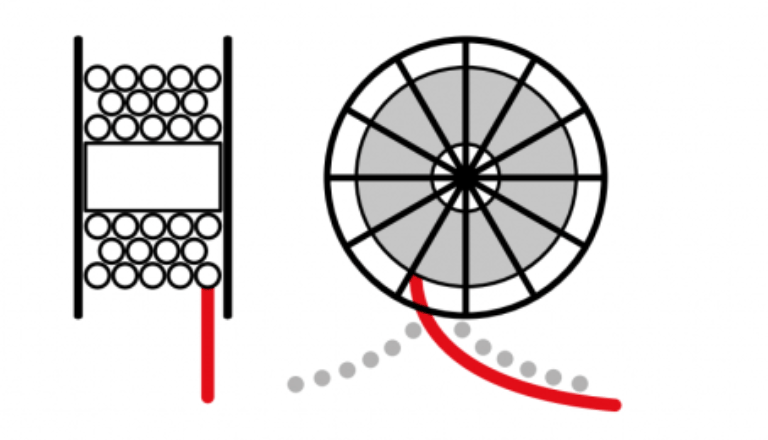

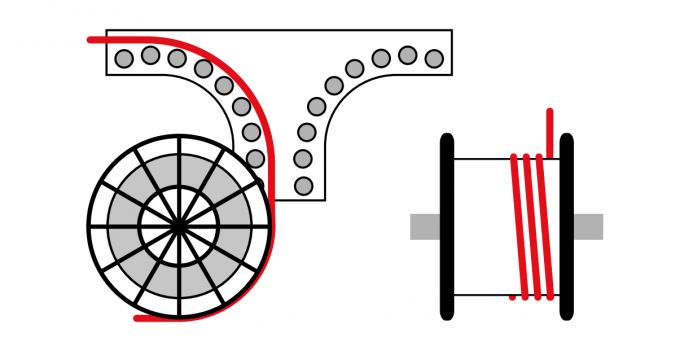

Key Features That Ensure Performance
The exceptional performance of the KSM-S (N)TSCGEWÖU cable system stems from several key design features that address the specific challenges of reeling cable applications. The anti-torsion braid represents one of the most critical innovations in the cable's construction. This specialised braided element prevents the accumulation of torsional stress that would otherwise cause conventional cables to fail prematurely when subjected to rotational forces during reeling operations.
Weight reduction and diameter optimisation contribute significantly to the cable's performance advantages. The engineering team has achieved substantial reductions in both outer diameter and weight compared to conventional cables of similar electrical capacity. This reduction minimises the mechanical loads on reeling equipment whilst improving handling characteristics and reducing fatigue on support structures. The reduced diameter also allows for more compact reeling drum designs, contributing to overall system efficiency.
High-speed operation capability sets the KSM-S (N)TSCGEWÖU cable apart from conventional alternatives. With maximum operating speeds of up to 180 metres per minute, the cable can accommodate the rapid movements required in modern automated handling systems. This high-speed capability is achieved through careful attention to dynamic balancing, material selection, and construction techniques that minimise heat generation and mechanical stress during rapid reeling operations.
The cable's torsion resistance capability allows for ±50 degrees per metre of torsional movement, providing exceptional flexibility for applications involving complex multi-axis movements. This torsional capability is essential for equipment such as ship-to-shore cranes where the cable must accommodate not only the linear movements of the trolley system but also the rotational movements of the crane structure.
Temperature performance represents another critical aspect of the cable's design. The cable operates reliably across a wide temperature range, from -40°C to +80°C in fixed installations and -25°C to +80°C in moving applications. The conductor temperature rating extends to +90°C, providing additional thermal margin for high-current applications. This temperature performance ensures reliable operation across diverse climatic conditions and industrial environments.
Fire safety characteristics incorporate self-extinguishing and flame-retardant properties according to IEC 60332-1 standards. These safety features are essential in industrial environments where fire risks must be minimised, particularly in applications involving high electrical loads and mechanical equipment that could generate ignition sources.
Fiber Optic Version: KSM-S (N)TSCGEWÖU + FO
The fibre optic enhanced version of the KSM-S (N)TSCGEWÖU cable represents the cutting edge of integrated power and communication solutions for industrial applications. This advanced configuration combines the robust power transmission capabilities of the standard cable with high-performance optical fibre elements that enable interference-free data communication essential for modern automated systems.
The optical fibre specification utilises gradient index multimode fibres with 62.5/125µm core/cladding dimensions, optimised for industrial communication applications. These fibres provide excellent performance characteristics including low attenuation, high bandwidth capability, and robust mechanical properties suitable for the demanding conditions encountered in reeling cable applications. The numerical aperture of 0.27 ± 0.02 ensures optimal light gathering capability whilst maintaining compatibility with standard industrial optical communication equipment.
Performance parameters of the fibre optic elements demonstrate the cable's suitability for high-speed data transmission applications. At 850nm wavelength, the attenuation coefficient of 3.3 dB/km and modal bandwidth of ≥200 MHz×km provide excellent performance for moderate-distance communication requirements typical in crane and mobile equipment applications. At 1300nm wavelength, the superior attenuation coefficient of 0.9 dB/km and modal bandwidth of ≥500 MHz×km enable longer-distance communication with enhanced data rates.
The integration of fibre optic elements within the cable structure requires sophisticated design considerations to ensure both the optical and electrical elements maintain their performance characteristics under mechanical stress. The optical fibres are housed within gel-filled protective tubes that prevent moisture ingress whilst allowing the necessary mechanical flexibility. The refractive index values of 1.497 at 850nm and 1.493 at 1300nm are carefully controlled during manufacturing to ensure consistent optical performance.
Industrial applications for the fibre optic version encompass advanced crane control systems that require real-time data communication for precise positioning, load monitoring, and safety systems. Modern container handling cranes utilise sophisticated control algorithms that depend on continuous, high-speed data communication between the control systems and the mobile components. The interference-free nature of optical communication eliminates the electrical noise issues that can affect electronic control systems in high-power electrical environments.
Diagnostic and monitoring systems represent another significant application area for the fibre optic version. These systems enable continuous monitoring of equipment condition, performance parameters, and operational status, facilitating predictive maintenance strategies that minimise downtime and maximise operational efficiency. The high bandwidth capability of the optical fibres supports the transmission of complex diagnostic data including video signals for remote monitoring applications.
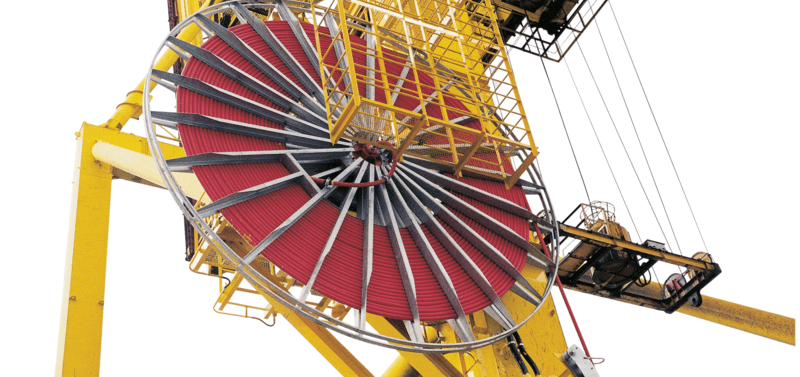

Available Cable Configurations
The KSM-S (N)TSCGEWÖU cable system offers comprehensive sizing options with conductor cross-sections ranging from 25mm² to 240mm² for power conductors, accompanied by proportionally sized earth conductors. This extensive range accommodates applications from control systems to high-power industrial drives.
Multiple voltage ratings are available to suit different electrical requirements, with enhanced insulation systems for higher voltage applications maintaining the essential mechanical flexibility required for reeling operations. The fibre optic enhanced versions incorporate gradient index fibres (62.5/125µm) or high-density configurations with 24 E9/125µm fibres for advanced communication requirements.
Weight optimisation represents a critical design consideration, as excessive cable weight can overload handling equipment and increase mechanical stress on support structures. The engineering approach minimises weight whilst maintaining electrical and mechanical performance, enabling proper system design for reeling drum capacity and support structure requirements.
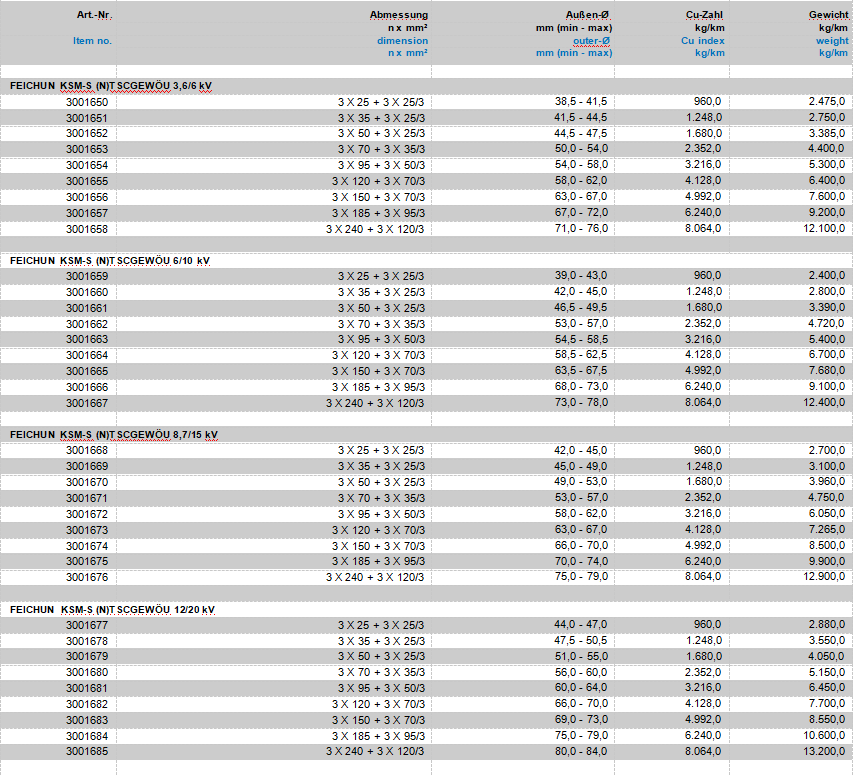



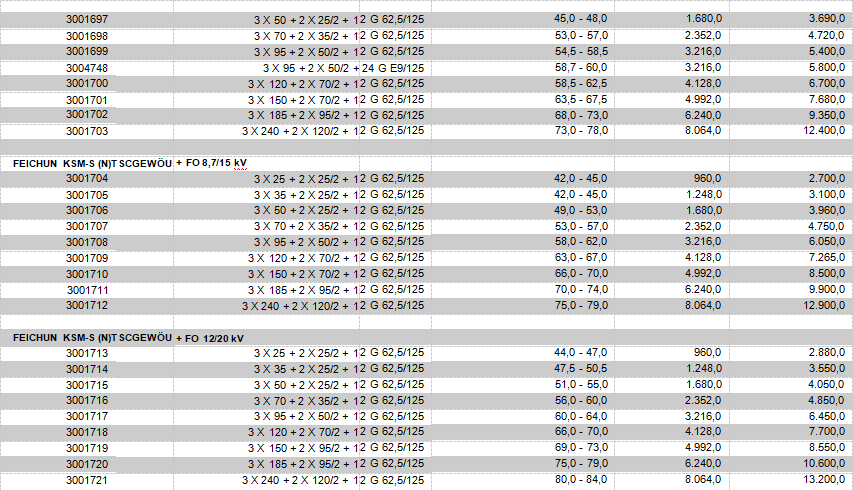

Why Choose KSM-S Reeling Cable for Cranes & Mobile Platforms
The KSM-S (N)TSCGEWÖU reeling cable system represents the culmination of advanced engineering expertise applied to one of the most challenging applications in industrial cable technology. The combination of mechanical robustness, electrical performance, and communication capability makes this cable system the optimal choice for container cranes, mobile heavy equipment, and other demanding industrial applications where conventional cables cannot provide adequate reliability or performance.
The mechanical benefits of the KSM-S system address the fundamental challenges that have historically limited the reliability of reeling cable installations. The anti-torsion braid technology, optimised weight distribution, and advanced material selection ensure that the cable can withstand the dynamic mechanical stresses inherent in mobile equipment applications whilst maintaining consistent electrical performance throughout its operational life.
Electrical performance characteristics including wide voltage range capability, high current capacity, and excellent insulation properties ensure that the cable can accommodate diverse power transmission requirements whilst maintaining safety margins essential for industrial applications. The availability of multiple voltage ratings from 3.6/6kV to 12/20kV provides flexibility in system design whilst ensuring compliance with electrical codes and safety requirements.
The communication capabilities provided by the fibre optic enhanced versions enable the integration of advanced control and monitoring systems that are increasingly essential in modern automated industrial facilities. The interference-free nature of optical communication, combined with high bandwidth capability, supports the implementation of sophisticated control algorithms and diagnostic systems that maximise operational efficiency whilst minimising maintenance requirements.
Environmental resilience ensures reliable operation across the diverse conditions encountered in industrial applications, from climate-controlled indoor facilities to harsh outdoor environments. The cable's resistance to moisture, temperature extremes, and chemical exposure provides the reliability essential for critical industrial applications where downtime represents significant economic impact.
The comprehensive customisation and support services available with the KSM-S system ensure that each installation can be optimised for specific operational requirements whilst maintaining the essential performance characteristics that define this advanced cable system. This combination of standard performance excellence and customisation capability makes the KSM-S (N)TSCGEWÖU reeling cable the definitive solution for demanding industrial applications requiring the ultimate in reliability, performance, and operational flexibility.
Frequently Asked Questions
Q: What makes the KSM-S (N)TSCGEWÖU cable suitable for high-speed reeling applications? A: The cable features an anti-torsion braid design, reduced weight construction, and specialised materials that enable operation at speeds up to 180 m/min whilst maintaining electrical integrity and mechanical reliability under dynamic loading conditions.
Q: Can the cable operate in wet or corrosive environments? A: Yes, the KSM-S cable is specifically designed for operation in dry, humid, wet, and outdoor environments. The rubber sheath compound provides excellent resistance to moisture ingress and chemical exposure commonly encountered in industrial applications.
Q: What is the difference between the standard and fibre optic versions? A: The standard version provides power transmission and basic control capabilities, whilst the fibre optic version (+ FO) incorporates optical fibres for high-speed, interference-free data communication essential for advanced control systems and diagnostic applications.
Q: How does the torsion resistance benefit crane applications? A: The ±50°/m torsion capability allows the cable to accommodate the complex multi-axis movements in crane operations, including trolley movement combined with crane rotation, without accumulating destructive torsional stress that would cause conventional cables to fail.
Q: What customisation options are available for specific applications? A: Customisation options include alternative conductor sizes, voltage ratings, cable lengths, sheath colours, and termination configurations. ST connectors for fibre optic versions and specialised termination hardware can be provided to match specific equipment requirements.
Q: What standards does the cable comply with for safety and performance? A: The cable complies with RoHS environmental requirements, follows DIN VDE 0250 construction principles, meets IEC 60332-1 fire performance standards, and utilises Class 5 conductors per DIN VDE 0295 and IEC 60228 specifications.
Q: How do I select the appropriate cable configuration for my application? A: Cable selection depends on electrical load requirements, voltage levels, environmental conditions, and mechanical stress factors. Technical support services are available to assist with application engineering and specification optimisation for specific operational requirements.
How to Reach Us
Get in Touch
SiteMap
Product Catalogue
Reeling Cable
Festoon Cable
Shore Power Cable




Scan to add us on WeChat
